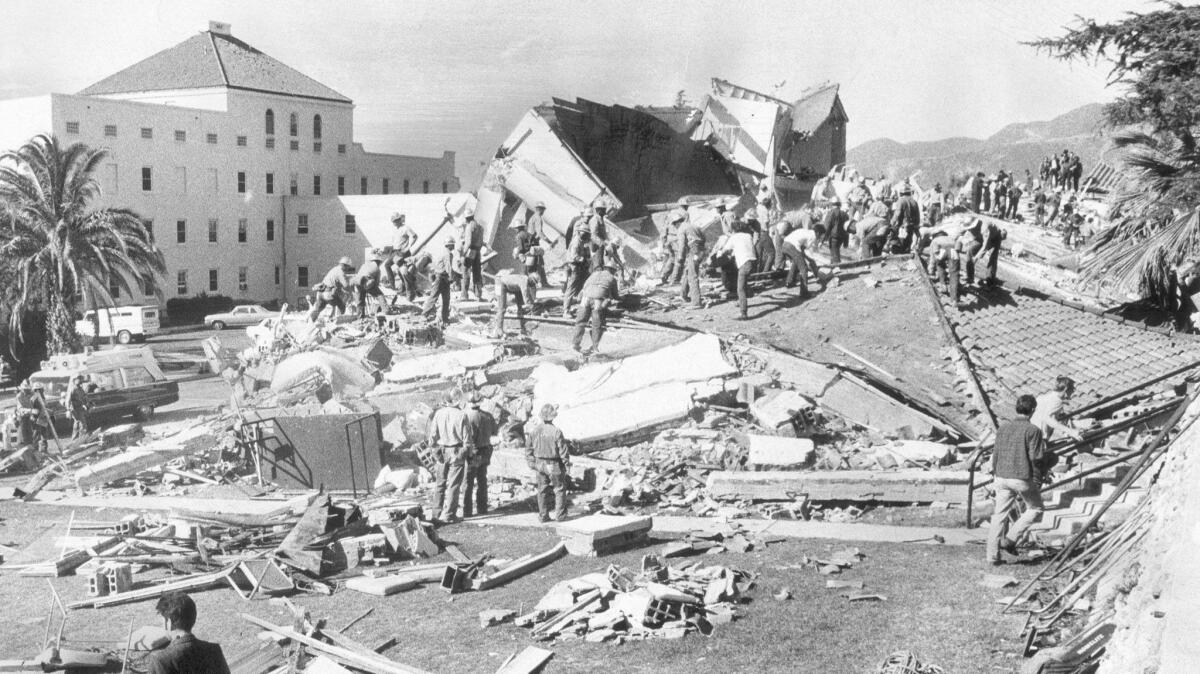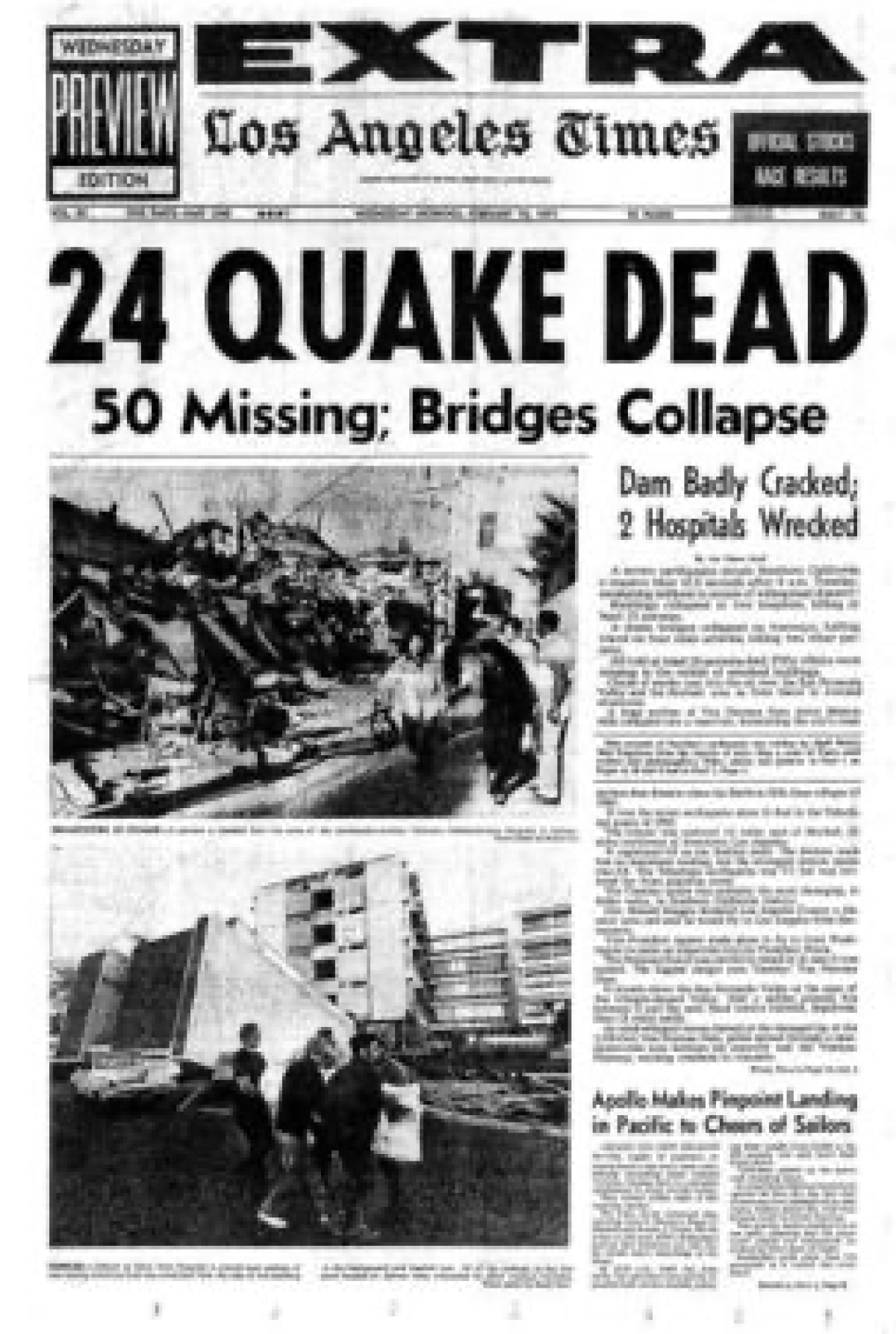Tell us your memories of the 1971 Sylmar earthquake

- Share via
Southern California is earthquake country.
But few temblors did more to raise awareness of the seismic dangers we face than the 1971 Sylmar quake.
It was the first destructive quake since the 1933 Long Beach temblor and came at the zenith of the region’s postwar suburban boom.
The San Fernando Veterans Administration Hospital, built in 1925, disintegrated into a pile of rubble. Nearby, in Sylmar, the first floor of the newly built six-story Olive View Hospital was pulverized.

A line of Los Angeles County ambulances was crushed by a parking overhang. One photo appears to show a wing of a multistory tower tipped on its side.
“It looked like a war zone,” one witness recalled. “There were patients everywhere and nurses trying to keep order. The buildings looked like they had been bombed.”
At 42 seconds after 6 a.m. on Feb. 9, 1971, the ground shook for 12 seconds, killing 64, injuring 2,543 and causing $553 million in damage.
The 6.5 magnitude quake highlighted vulnerabilities both in buildings and infrastructure. It hastened seismic safety measures, including a decades-long quest to retrofit brittle concrete buildings and rules governing how new buildings are constructed.
It made quakes and fears of the Big One part of popular culture, spawning the 1974 disaster epic “Earthquake!”
For all the damage done, it could have been much worse.
The lower dam at the Van Norman reservoir nearly collapsed. The 1,100-foot dam held 3.6 billion gallons of water, but it was only half full the morning of the quake; the water level was 36 feet below the lip. The top 30 feet of the edifice crumbled, leaving the water six feet from the top and fresh chunks of earth falling off with each aftershock. More than 80,000 residents were evacuated for three days.
Do you remember the quake? We want to hear your stories:
More to Read
Sign up for Essential California
The most important California stories and recommendations in your inbox every morning.
You may occasionally receive promotional content from the Los Angeles Times.










